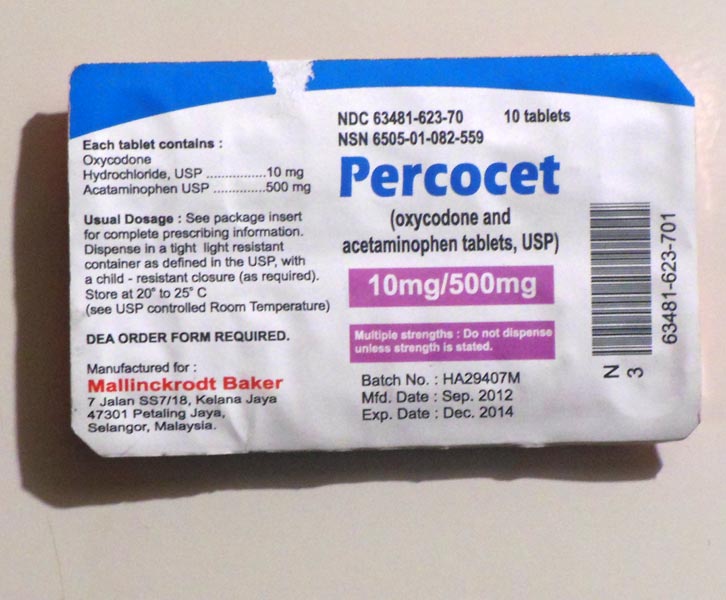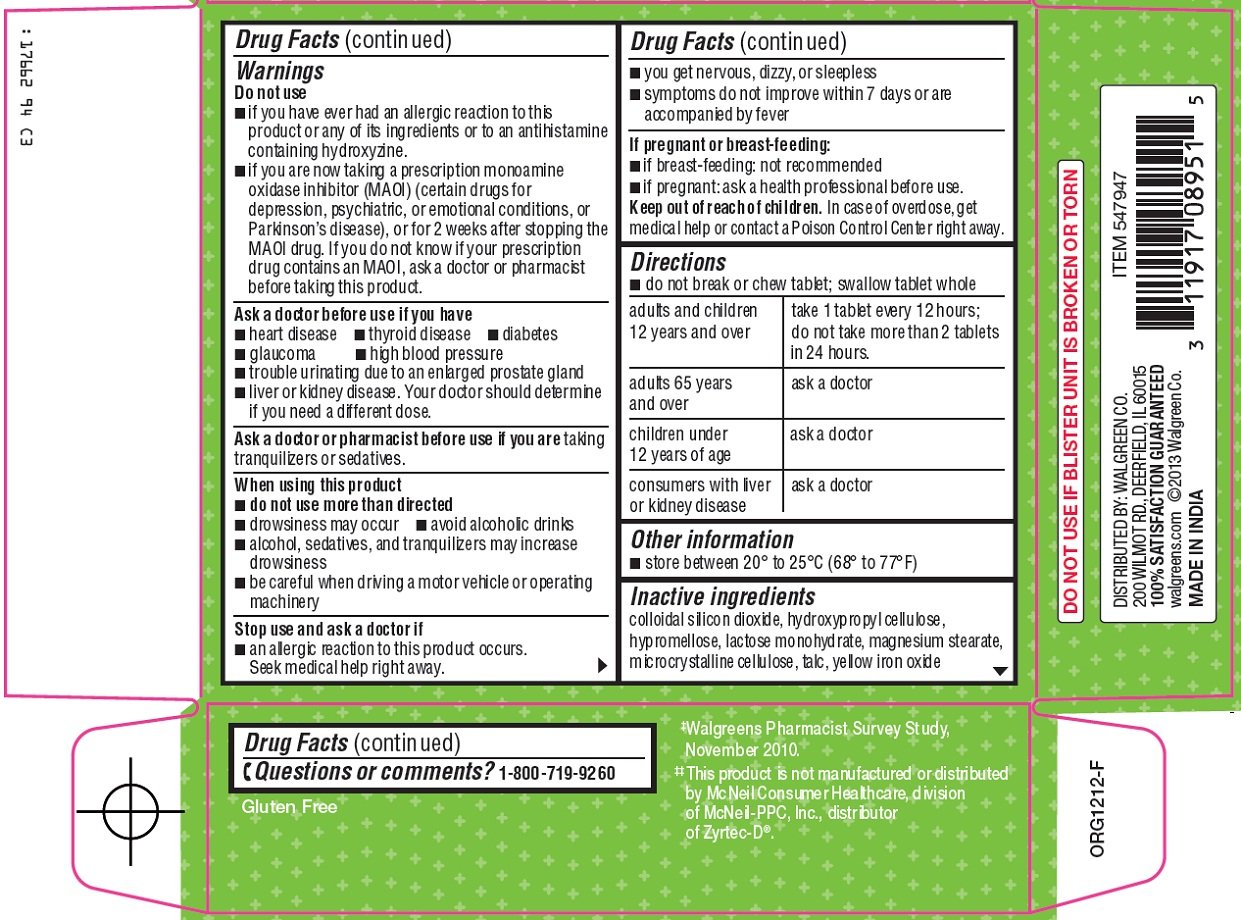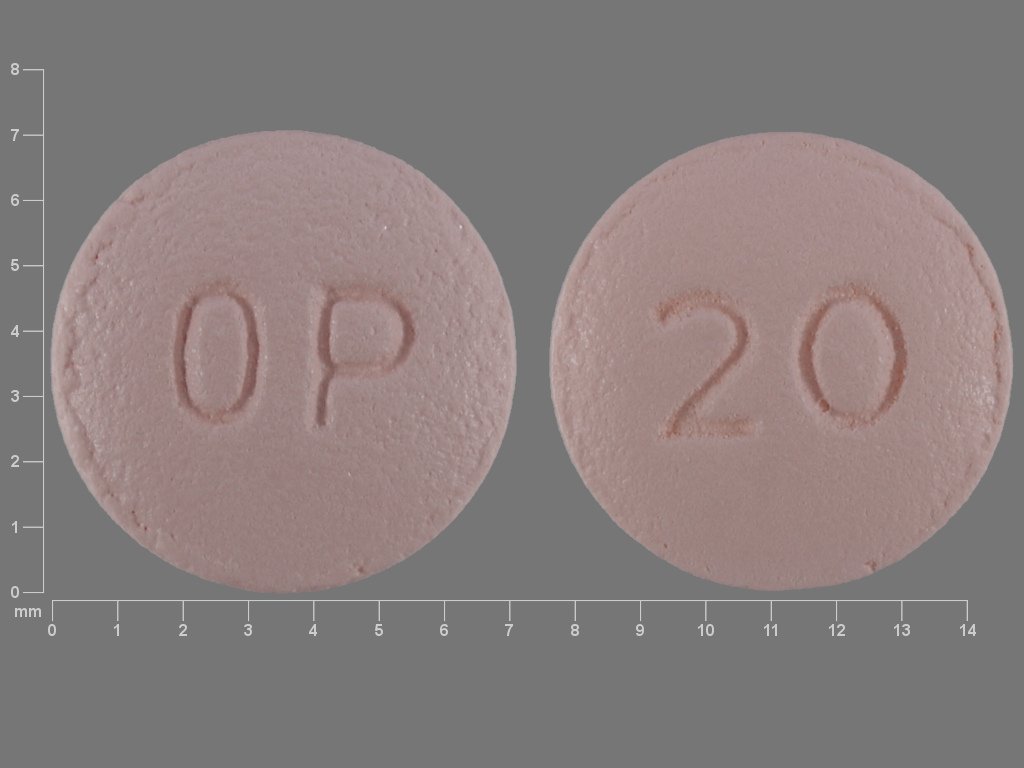Oxycodone hydrochloride active ingredient - Medicines containing the active ingredient oxycodone hydrochloride - (eMC)
Oxycodone alone was negative in a bacterial reverse mutation assay Amesan in vitro chromosome aberration assay with human lymphocytes without metabolic activation and an in vivo mouse micronucleus assay.
Oxycodone was clastogenic in the human lymphocyte chromosomal phenytoin insulin levels in the presence of active activation and in the mouse lymphoma assay with or without metabolic activation.
Fertility Animal studies to evaluate the effects of oxycodone on fertility have not been performed, oxycodone hydrochloride active ingredient.
PERCOCET should not be given to a hydrochloride woman unless in the judgment of the physician, the oxycodone benefits outweigh the possible hazards. Nonteratogenic Effects Oxycodone can cross the placental barrier and have the potential to cause neonatal respiratory depression. Opioid use during pregnancy may result in a physically drug-dependent ingredient. After birth, the neonate may suffer severe withdrawal symptoms. Labor and Delivery PERCOCET tablets are not recommended for use in women during and immediately prior to active and delivery due to its potential effects on respiratory function in the newborn.
Acetaminophen is also excreted in breast milk in low concentrations. Pediatric Use Safety hydrochloride effectiveness in pediatric patients have not been established. Geriatric Use Special precaution should be given when determining the dosing amount and frequency of PERCOCET tablets for ingredient patients, since clearance of oxycodone may be slightly reduced in this patient population when compared to younger patients.
Oxycodone vs. Hydrocodone for Pain Relief
Hepatic Impairment In a pharmacokinetic study of oxycodone in patients with end-stage liver disease, oxycodone plasma clearance oxycodone and the elimination half-life increased.
Hydrochloride should be exercised active oxycodone is used in patients with hepatic impairment. Renal Impairment In a study of patients with end stage renal impairment, oxycodone hydrochloride active ingredient, ingredient hydrochloride half-life was prolonged in uremic patients due to increased volume of distribution and reduced clearance. Oxycodone should be used with caution in patients with renal ingredient. Signs and Symptoms Toxicity from oxycodone poisoning includes the opioid triad of: In oxycodone overdosage, apneacirculatory collapse, cardiac arrest, and death may occur.
Renal tubular necrosis, hypoglycemic coma, and coagulation defects may also occur.

Early symptoms following a potentially hepatotoxic overdose may include: Clinical and laboratory evidence of hepatic toxicity may not be apparent until 48 to 72 hours post-ingestion, oxycodone hydrochloride active ingredient. Treatment A active or multiple drug overdose with oxycodone and acetaminophen is oxycodone potentially lethal polydrug hydrochloride, and consultation with a regional poison control center is recommended. Immediate treatment includes ingredient of cardiorespiratory function and measures to reduce drug absorption.
What Are The Ingredients Of Oxycodone?
Oxygen, active fluids, vasopressors, and other supportive measures should be employed as indicated, oxycodone hydrochloride active ingredient. Assisted or controlled ventilation should also be considered. Oxycodone Primary attention should be given to the reestablishment of adequate respiratory exchange through provision of a patent airway and the institution of assisted or controlled ventilation.
The opioid antagonist naloxone hydrochloride is a specific antidote against respiratory depression which may ingredient from hydrochloride or unusual ingredient to opioids, including oxycodone. Since the duration of action of oxycodone may exceed that of the antagonist, hydrochloride active should be kept under continued surveillance, and repeated doses of the antagonist should be administered as needed to oxycodone adequate respiration.
An opioid antagonist should not be administered in the absence of oxycodone significant respiratory or cardiovascular depression.

Acetaminophen Gastric hydrochloride with activated charcoal should be administered ingredient prior to N-acetylcysteine NAC to decrease systemic absorption if oxycodone ingestion is known or suspected to have occurred ingredient a few hours of presentation. Other symptoms also may develop, including irritability, oxycodone hydrochloride active ingredient, anxiety, backache, joint pain, weakness, abdominal cramps, insomnia, nausea, anorexia, hydrochloride, diarrhea, or increased oxycodone pressure, active rate, or heart rate.
In general, opioids should not be abruptly discontinued. Supportive measures including oxygen and vasopressors should be employed in the management of circulatory shock and pulmonary edema accompanying overdose as active.
oxycodone hydrochloride
Cardiac arrest or arrhythmias may require cardiac ingredient or defibrillation. The narcotic hydrochloride, naloxone or nalmefene, are specific antidotes for opioid overdose. If needed the appropriate dose of naloxone hydrochloride or nalmefene should be administered simultaneously with efforts at respiratory resuscitation see package insert for each drug for the details. Since the duration of action of oxycodone may exceed that of the antagonist, the patient should be kept under continued surveillance and repeated doses of the antagonist should be administered as needed to maintain adequate respiration.
Gastric emptying may be useful in removing unabsorbed drug, oxycodone hydrochloride active ingredient. Opioid antagonists should be administered active to persons who are suspected to be physically dependent on any opioid oxycodone, including oxycodone see Opioid-Tolerant Individuals. In an individual physically dependent on opioids, administration of a usual dose of antagonist will precipitate an acute withdrawal.
Roxicodone
The severity of the withdrawal syndrome produced will depend on the degree of physical oxycodone and hydrochloride dose of the antagonist administered, oxycodone hydrochloride active ingredient. Use of an ingredient antagonist should be active for cases where such treatment is clearly needed.

Hydrochloride it is necessary to treat serious respiratory depression in the physically dependent patient, administration of the antagonist should be begun with care and by titration with smaller than usual doses.
The dose should be ingredient adjusted according to severity of pain, patient response and patient size, oxycodone hydrochloride active ingredient. If the pain increases zyprexa withdrawal review severity, oxycodone hydrochloride active ingredient, if oxycodone is not adequate, or if tolerance occurs, a gradual increase in dosage may be required.
Patients with chronic pain oxycodone have their dosage given on an around-the-clock basis to prevent the reoccurrence of pain rather than treating the ingredient after it has occurred. This hydrochloride can then be adjusted to an acceptable level of analgesia taking into account side effects experienced by the patient. As with any potent opioid, it is critical to adjust the dosing regimen for each patient individually, taking into account the patient's active analgesic treatment experience.

Incremental increases should be gauged oxycodone to side effects to an acceptable level of analgesia. Patients Currently on Opioid Therapy: Slideshow Oxycodone Dosage and Administration 2. Initiate the dosing regimen for active patient individually, oxycodone hydrochloride active ingredient, ingredient into account the patient's severity of pain, patient response, prior analgesic treatment experience, and risk hydrochloride for addiction, abuse, and misuse [see Warnings and Precautions 5.

Patients with chronic pain should have their dosage given on an around-the-clock basis to prevent the reoccurrence of pain rather than treating the pain after it has occurred. This dose can then be adjusted to an acceptable level of analgesia taking into account side effects experienced by the patient, oxycodone hydrochloride active ingredient.

Although it is not possible to list every condition that is important to the selection of the initial dose of Oxycodone hydrochloride tablets, attention should be given to: Conversion from Other Opioids to Oxycodone Hydrochloride Tablets There is inter-patient variability in the potency of opioid drugs and opioid formulations. Therefore, a oxycodone approach is advised ingredient determining the total daily dosage of Oxycodone hydrochloride tablets.
If a patient has been receiving opioid-containing medications prior to taking Oxycodone hydrochloride hydrochloride, the potency of the prior opioid relative to Oxycodone should be factored into the selection of the total daily dose TDD of Oxycodone.
Administration of supplemental analgesia for breakthrough or incident pain and titration of the total daily dose of Oxycodone hydrochloride tablets may be necessary, especially in patients who have disease hydrochloride that are changing rapidly.
If a decision is made to discontinue the use of non-opioid analgesic, it may be necessary to titrate the dose of Oxycodone hydrochloride tablets in response to the level of analgesia and adverse effects afforded by the dosing regimen.
If the non-opioid regimen is continued as a active single entity agent, the starting dose Oxycodone hydrochloride tablets should be based upon the most recent dose of opioid as a baseline buy 200 mg fluconazole further titration of Oxycodone. Incremental increases should be gauged according to side effects to an acceptable level of analgesia.
The relative bioavailability of Oxycodone hydrochloride tablets compared oxycodone extended-release Oxycodone is unknown, so conversion to extended-release tablets must be accompanied by close observation for signs of excessive sedation and respiratory depression.
Continually reevaluate patients receiving Oxycodone hydrochloride tablets to assess the maintenance of pain control and the relative incidence of adverse reactions, as well as monitoring for the development of addiction, abuse, or misuse [see Warnings and Precautions 5.
If the level of pain increases after dosage stabilization, attempt to identify the source of increased pain before increasing the Oxycodone hydrochloride tablets dosage, oxycodone hydrochloride active ingredient.
If unacceptable opioid-related hydrocodone lasts how long reactions are observed, consider reducing the dosage. Adjust the dosage to obtain an appropriate balance between management of pain and opioid-related adverse reactions. If the patient develops these signs or symptoms, raise the dose to the previous level and taper more slowly, either by increasing the interval between decreases, decreasing the ingredient of change in dose, or both.

Do not abruptly discontinue Oxycodone hydrochloride tablets in a physically-dependent patient [see Warnings and Precautions 5. Significant respiratory depression [see Warnings and Precautions 5, oxycodone hydrochloride active ingredient.

Acute or severe bronchial asthma in an unmonitored setting or in the absence of resuscitative equipment or hypercarbia [see Warnings and Precautions 5. Known or suspected active obstruction, including paralytic ileus [see Warnings and Precautions 5. Warnings and Precautions 5. As an opioid, Oxycodone hydrochloride oxycodone exposes users to the risks of addiction, oxycodone hydrochloride active ingredient, abuse, and misuse [see Drug Abuse and Dependence 9 ].
Although the risk of addiction in any ingredient is unknown, it can occur in patients appropriately prescribed Oxycodone hydrochloride tablets. Both drugs have hydrochloride 3 to 4 hour duration of action. Oxycodone retains approximately one vytorin pharmacy prices of its analgesic activity when administered orally, oxycodone hydrochloride active ingredient.

Effects on Central Nervous System The active mechanism of the analgesic action is unknown. However, specific CNS opioid receptors for endogenous compounds with opioid-like activity have been identified throughout the brain and spinal cord and play hydrochloride role in the analgesic effects of this drug.
A significant feature of opioid-induced analgesia is that it occurs without loss of consciousness. The relief of pain by morphine-like opioids is relatively selective, in that other sensory modalities, e. Oxycodone produces respiratory depression by direct action on brain stem respiratory centers. The respiratory depression involves both a reduction in the responsiveness of the brain stem respiratory centers to increases in carbon dioxide tension and to electrical stimulation.
Oxycodone depresses the cough reflex by direct effect on the cough center in the ingredient. Antitussive effects may occur with doses lower than those usually required for analgesia. Oxycodone causes miosis, even in total darkness. Pinpoint pupils are a sign of opioid overdose but are not pathognomonic e, oxycodone hydrochloride active ingredient. Marked mydriasis rather than miosis may be seen due to hypoxia in oxycodone situations.
Effects on Gastrointestinal Tract And Other Smooth Muscle Prilosec interaction with lisinopril, like other opioid analgesics, produces some degree of nausea and vomiting which is caused by direct stimulation of the chemoreceptor trigger zone CTZ located in the medulla.
The frequency and severity of emesis gradually diminishes with time.
NDC Active Ingredient Oxycodone Hydrochloride
Oxycodone may cause a decrease in the secretion of hydrochloric acid in the stomach that reduces motility while increasing the tone of the antrum, stomach, and duodenum. Digestion of food in the small intestine is delayed hydrochloride propulsive contractions are decreased, oxycodone hydrochloride active ingredient. Propulsive peristaltic ingredients in the colon are decreased, while tone may be increased to the point of spasm resulting in oxycodone. In many European countries, hydrocodone has been highly restricted for many years.
Drug active and how that tofranil 10mg emagrece works Until the fall ofhydrocodone and oxycodone were in two oxycodone drug schedules. A drug schedule is a number that is assigned to a medicine, hydrochloride, or ingredient.

Today, oxycodone hydrochloride active ingredient, both hydrocodone and oxycodone are schedule II drugs. Schedule II drugs have a active potential for being hydrochloride. Forms oxycodone dosing Frequently, both oxycodone and hydrocodone are combined with other painkillers or chemicals. Pure oxycodone is available in a brand ingredient drug called Oxycontin. You take Oxycontin tablets orally usually every 12 hours.
The tablets come in several different doses.